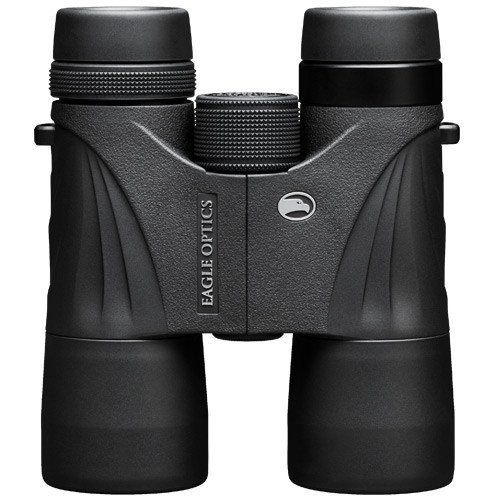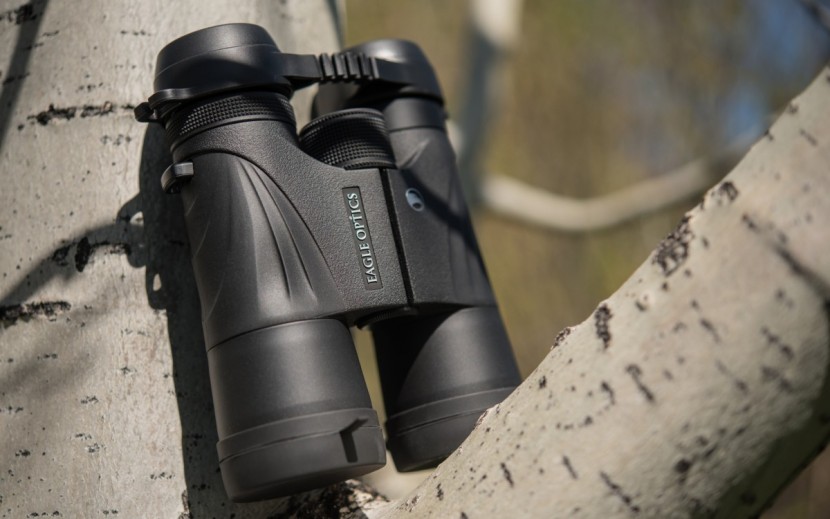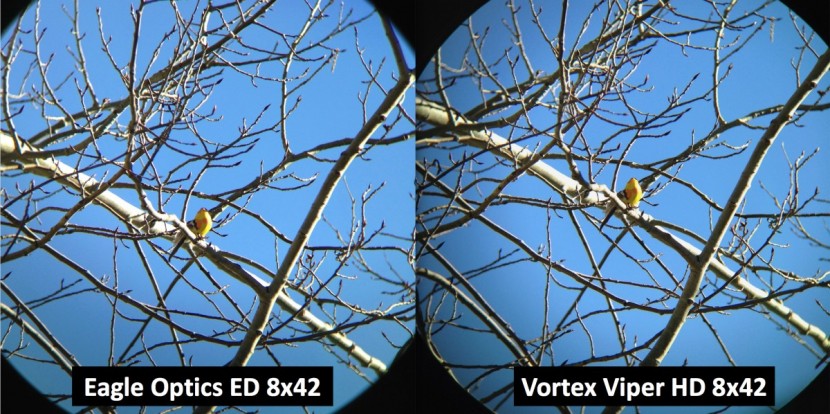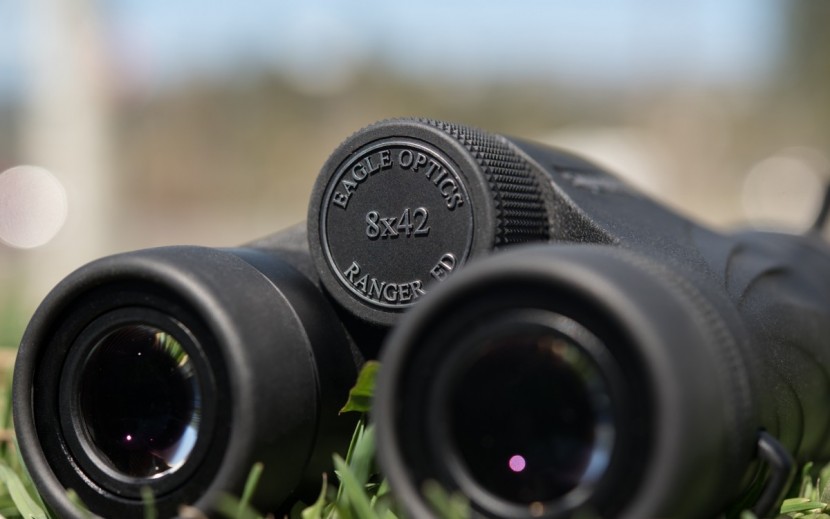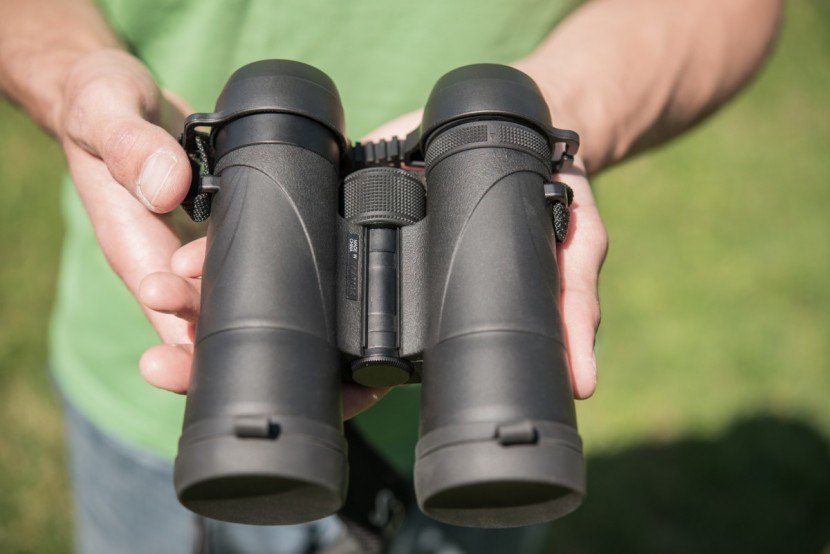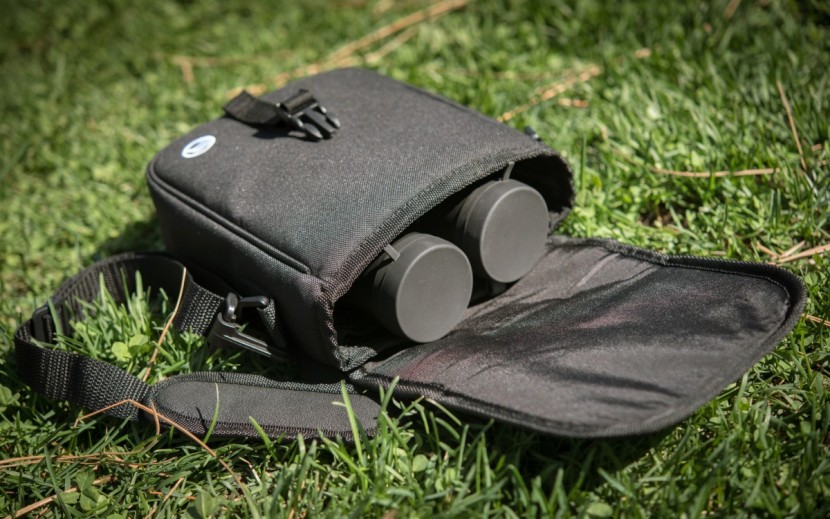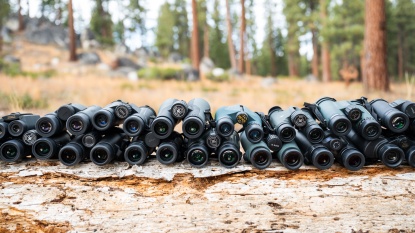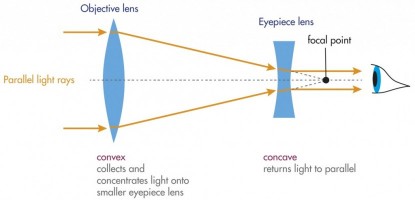After more than 30 years in the binocular biz, Eagle Optics is closing its doors. These binoculars, as well as any others by the company, are no longer in production.
Eagle Optics Ranger ED 8x42 Review
Our Verdict
After more than 30 years in the binocular biz, Eagle Optics is closing its doors. These binoculars, as well as any others by the company, are no longer in production.
Our Analysis and Test Results
The Eagle Optics Ranger ED 8x42 binoculars strike a near perfect balance between quality and affordability. They will provide both great performance and great value to anyone looking to bring the horizon a bit closer.
In the following sections we further review the Eagle Optics Ranger ED 8x42's performance in our individual testing metrics.
Clarity
The Ranger ED was one of the clearest models on our test, earning a score of 9 out of 10.
Theses binoculars offer fully coated, extra-low dispersion lenses that increase light transmission and minimize glare. Functionally this increases the resolution of the image that reaches your eyes. When looking at our model goldfinch with the Ranger ED the shape of the white wing bars were clearly defined, whereas with lesser models they just looked like amorphous patches of white. One of our testers used these bins at a local hawk watch and was able to make out the barring on high soaring broad winged hawks, a feat that was only match by the Swarovski EL. In our ISO 12233 chart test we were able to make out the line in the 10 zone with these binoculars.
Brightness
The Ranger ED were one of the top scorers in our brightness testing, picking a score of 9 out of 10 in a metric where scores ranged from 2 to 10.
The Ranger ED provided consistently bright images in all of the weather conditions that we tested our binoculars in. This was particularly noticeable at the periphery of the image. Where other bins had a bright center focal point that faded towards the edges of the image, the Ranger ED was able to maintain brightness throughout the entire glass, creating a much more engrossing visual experience. And let's face it, you don't want to miss the brilliant plumage of a scarlet tanager because your bins are dark around the edges. The only models we tested that were brighter than Ranger ED either cost 7 times as much, or had much bigger lenses, and were thus much heavier and more bulky.
Ease of Adjustment
The Ranger ED again earned a top mark in our ease of adjustment setting with a score of 9 out of 10. This was one point off the top score and well ahead of the low score of 6.
The focus knob on the Ranger ED is smooth enough that you can easily keep a soaring osprey in focus as you follow it through the sky, but provides enough resistance that you can easily stop at your desired focus point. The diopter is also easy to focus and locks in place, so there's no chance of knocking it out of whack when jump to see that bohemian waxwing, only to find that it's another one of the cedar variety. The eyecups lock into place so they feel solid when pushing against your face.
Field of View and Close Focus Range
The Ranger ED five you a field of view of 341 feet when viewing something 1000 yards away. This was about average for the 8x magnification models we tested, and significantly better than models that offer higher magnification.
The Ranger ED close focus range is 5.2 feet. There are models that can focus up to 2 feet closer, but we doubt you'll really notice this difference in the field. IF you think about it, 5.2 feet equates to the distance from most adults' eyes to their feet (or just in front of their feet if they're on the shorter side). In our experience the critters we're looking at through binoculars are rarely cooperative enough to plop down right at our feet, so a close focus range of 5.2 feet is rarely limiting.
Comfort
The Ranger ED again scored a 9 out of 10 in our comfort testing, putting it just off the top score of 10, but miles ahead of the low score of 4.
At 23.6oz the Ranger ED is fairly light for a full sized binocular. This reduces fatigue in day to day use, even if you've spent the last 45 minutes trying to figure out if the thing jumping around the far pine tree is a black and white warbler or just another chickadee. The rubber coating also provides a secure feeling grip, and the barrels are a pleasant size for most hands. The one thing that kept the Ranger ED from receiving a perfect 10 in this metrics was its lack of thumb indents. While some of our testers didn't quite care for these, most felt that those little indents just made the binoculars feel like they were made to fit in your hand.
Construction Quality
The Ranger ED scored a perfect 10 out of 10 in our construction quality testing.
The Ranger ED ha all of the construction attributes you should look for in a binocular: O-ring sealed optics for waterproofness, nitrogen filled barrels to prevent fogging, and a rubberized coating to protect from drops and scratches. On top of that all moving parts, from the focus knob to the eyecups, have a solid action. We could feel grit grinding in the hinges of many of the hinges and focus knobs of after running many of our binoculars through their paces, but we had no such issue with the Ranger ED.
Best Application
These are perfect for birding, but the versatility offered by their full sized construction makes them excel at just about anything. The only place we wouldn't take them is on a multi-day backpacking trip where we were really trying to save weight. In that instance we might sacrifice some optical quality and get a compact pair.
Value
The Eagle Optics Ranger ED 8x42 lists for $330. It was the best performing in this price range, and was even comparable to models that cost thousands of dollars more. The Eagle Optics Ranger ED 8x42 binoculars are such a good value that we were somewhat tempted to award them both our Editors' Choice and Best Buy awards.
Conclusion
The Eagle Optics Ranger ED 8x42 led the field in many of our testing metrics and is available at a reasonable price. It is our hands down recommendation for anyone looking for a good pair of binoculars.


